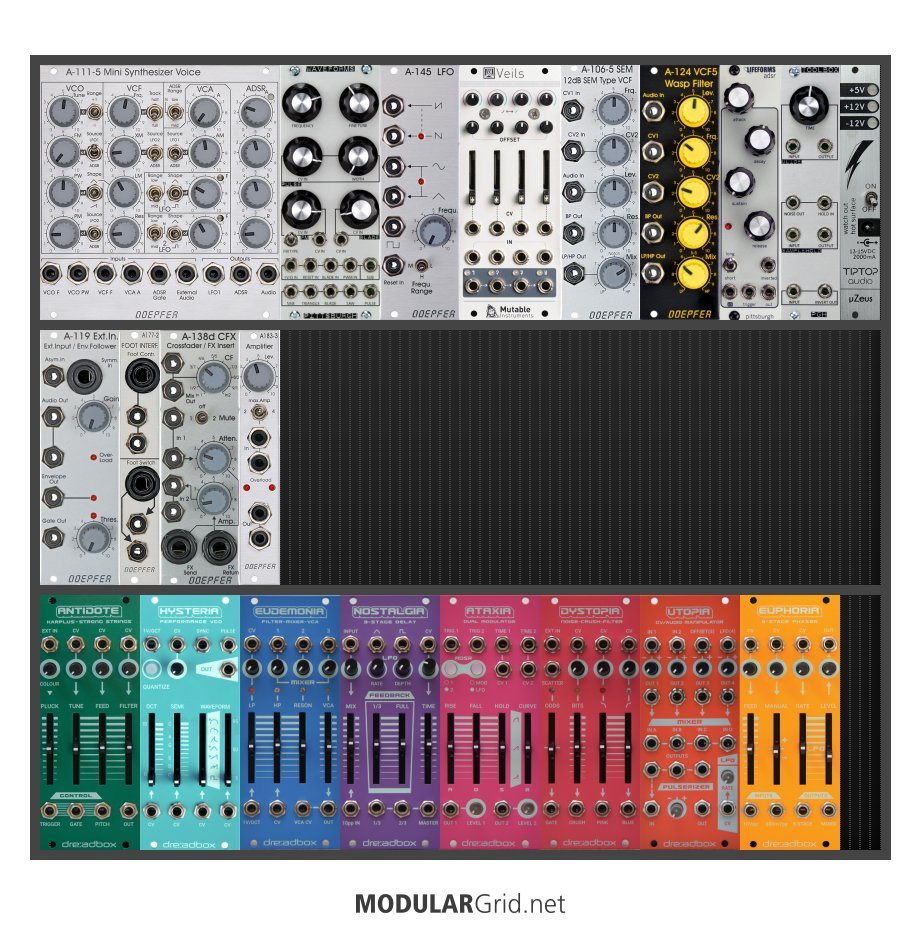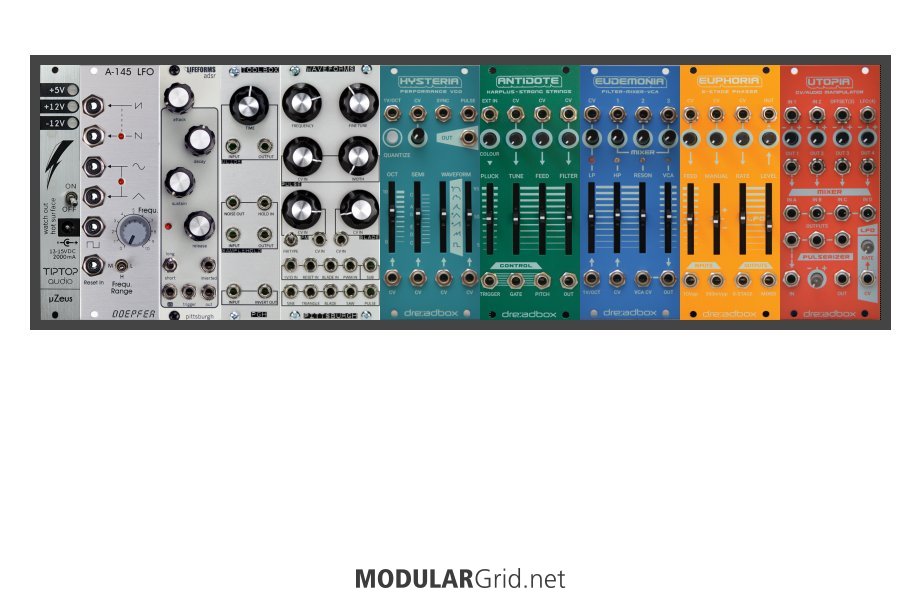don't worry too much about plugging the power in - iirc uZeus comes with a flying busboard on which the headers are keyed - mostly power cables are the right way round - out of 60 or so bought modules only 1 was incorrect and that was an old doepfer module - with a non-standard power cable (power header on multiple pcbs)
but it's still a great idea to know how to check power cables
on modules that don't have keyed headers they should be marked with a stripe or -12v - this corresponds to the red stripe on a correctly made power cable
if the headers are keyed then the power cable should just plug in one way
power cables should be red stripe match up to a small triangle to the left of the key on the connector
NB some modules/power cables don't work like this but they are the exception and I don't think any of the modules that you have are in this group
re: swiss army knife modules - another one is fx aid (xl) - igor keeps adding more and more algorithms - there are over a hundred, of which 32 can be loaded at any one time - including - reverbs, delays, filters, drum sounds etc
"some of the best base-level info to remember can be found in Jim's sigfile" @Lugia
Utility modules are the dull polish that makes the shiny modules actually shine!!!
sound sources < sound modifiers < modulation sources < utilities


